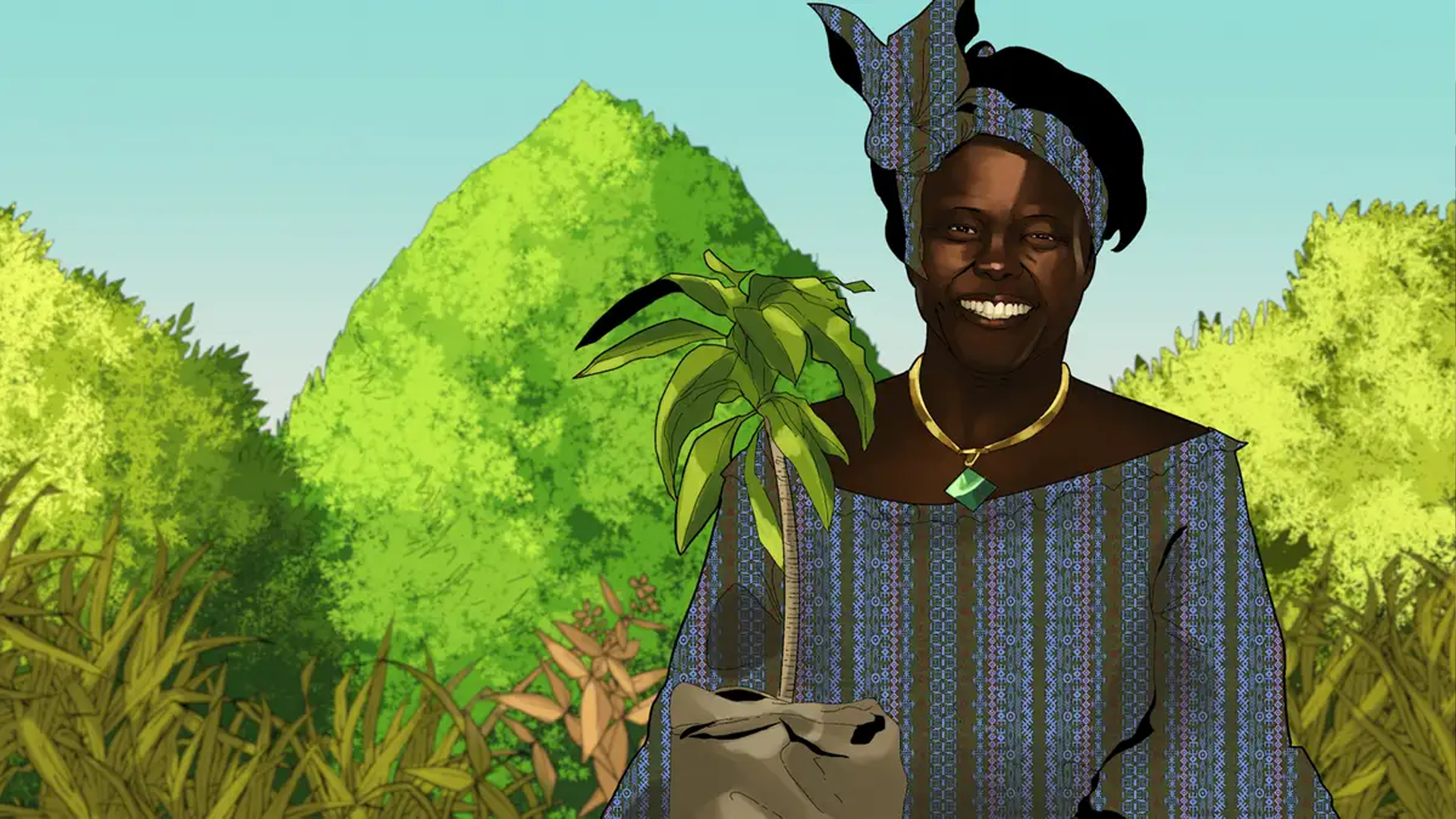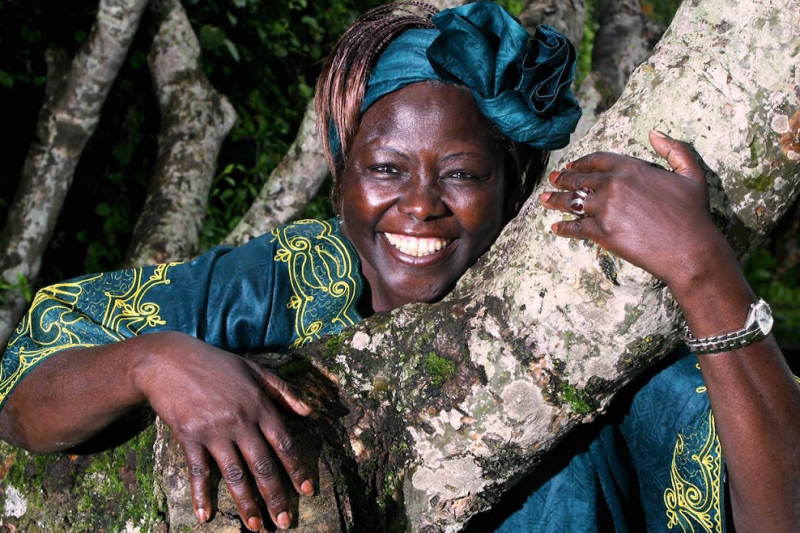Wangari Maathai

Wangari Maathai planting a tree as part of the Green Belt Movement
Biography
Wangari Muta Maathai was born in 1940 in rural Kenya, surrounded by the lush landscapes that would later inspire her life’s work. She grew up understanding that the health of the land and the well-being of her community were deeply connected.
After studying in the United States and earning degrees in biology and veterinary science, Maathai returned to Kenya with a passion for using science to solve local problems. She quickly recognized a major crisis: forests were disappearing, water sources were drying up, and women were struggling to find firewood to cook meals for their families.
In 1977, she launched the Green Belt Movement—a grassroots initiative that empowered women to plant trees in their communities. These ‘green belts’ restored forests, prevented soil erosion, and brought back clean water, firewood, and wildlife to areas that had been stripped bare.
Her work went beyond planting trees. Maathai understood that environmental degradation was tied to political corruption, inequality, and the silencing of marginalized voices—especially women. The Green Belt Movement became both an environmental and human rights campaign, teaching people that caring for the earth also meant fighting for justice.
Despite being arrested, beaten, and harassed by government authorities, Maathai refused to stop. Her courage made her a symbol of resilience, and her peaceful defiance inspired global movements for climate justice, democracy, and women’s rights.
By the early 2000s, the Green Belt Movement had planted more than 40 million trees across Kenya. In 2004, Maathai was awarded the Nobel Peace Prize—the first African woman to receive it—for her contributions to sustainable development, democracy, and peace.
Until her passing in 2011, Wangari Maathai remained a powerful voice for the planet, showing that small, persistent actions can grow into world-changing movements.
Wangari Maathai didn’t just plant trees—she planted hope, resilience, and justice. Her Green Belt Movement showed that environmental restoration could also restore communities, economies, and democracies. She challenged the idea that change had to come from governments or big institutions, proving instead that local, grassroots action could ripple outward to transform an entire nation. By linking women’s empowerment with environmental stewardship, she broke down the false divide between social justice and ecological care. Her courage in the face of threats and arrests reminds us that defending the planet often means standing up to systems of power that benefit from its destruction. Maathai’s legacy calls each of us to see ourselves as stewards of the earth and defenders of the vulnerable, knowing that even the smallest act—like planting a single seed—can grow into something world-changing.
?
How did the Green Belt Movement link environmental care with women’s empowerment?
What challenges did Maathai face from the Kenyan government, and how did she overcome them?
Why is tree planting such an effective tool for both environmental and social change?
How does Maathai’s work connect to today’s climate justice movements?
What lessons can young people learn from her approach to grassroots activism?
Dig Deeper
What does it take to make a difference? According to Wangari Maathai: 'Start little.' Her efforts to plant trees and fight deforestation in Kenya turned into a broader campaign for women’s empowerment and democracy.
An overview of Maathai’s founding of the Green Belt Movement and her work for environmental conservation and women's rights.
Discover more

Malala Yousafzai
Malala Yousafzai stood up to the Taliban at age 11 to defend her right to an education.

Milly Zantow
Long before recycling bins became a normal part of curb‑side life, Milly Zantow invented the numbered triangle system that tells the world which plastics can be recycled.

Bayard Rustin
Bayard Rustin was the brilliant strategist behind the 1963 March on Washington and a key advisor to Martin Luther King Jr.
Further Reading
Stay curious!
